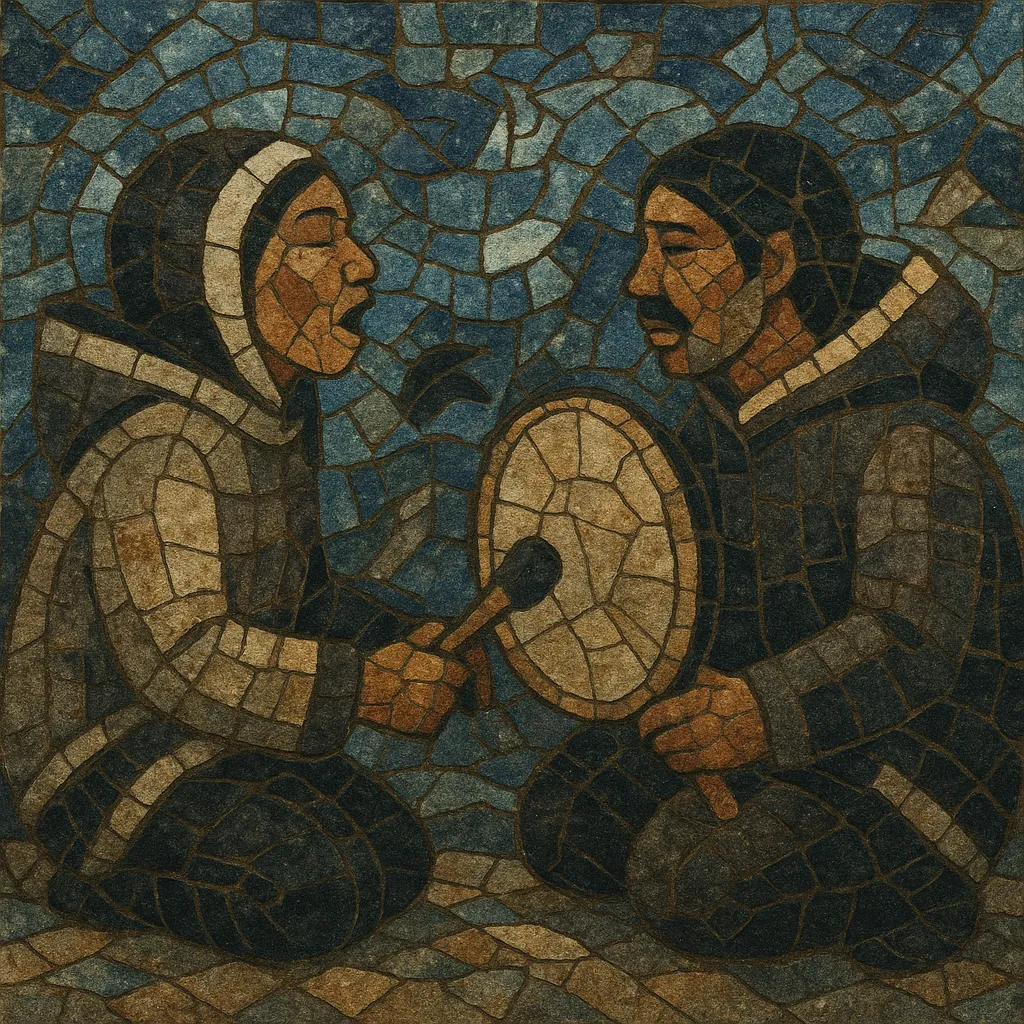Inuit music encompasses the traditional vocal, rhythmic, and ceremonial sound practices of the Inuit across the Arctic, including drum-dance songs (qilaut or frame-drum traditions), game songs, and the distinctive women’s throat-singing (katajjaq). It is primarily vocal and percussive, built on repetitive patterns, vocables, and a strong sense of breath and pulse rather than on Western harmony.
Its aesthetics mirror Arctic life: timbral play (imitations of animals, wind, and ice), interlocking rhythms, and communal participation. Songs often serve social and ceremonial functions—storytelling, communal games, healing, and celebration—sung in Inuit languages (e.g., Inuktitut), with melodies of narrow range, steady pulses, and textural interplay instead of chordal development.
The roots of Inuit music are intertwined with the emergence of Thule/Inuit culture in the Arctic around the 1000s. Musical activity centered on communal life: drum-dances accompanied storytelling and celebrations; shamans used song in ritual; and women’s throat-singing (katajjaq) developed as a social game and a way to pass time during long winters. Music emphasized pulse, breath, and timbre over harmony, with frame drums (qilaut) and voice as primary instruments.
From the 19th to mid-20th centuries, missionary influence and colonial schooling led to suppression of traditional practices in many communities. Nevertheless, home and community settings preserved drum-dance repertoires and katajjaq. By the mid-20th century, exposure to radios and recordings brought guitars and Western song forms, catalyzing hybrid Inuit styles while older practices persisted.
From the 1970s onward, cultural resurgence movements supported renewed public performance of drum-dance and throat-singing. Recording projects, cultural festivals, and community radio helped document elders and transmit knowledge to younger generations. In the 2000s–2020s, artists integrated traditional techniques with folk, rock, pop, and experimental idioms, bringing Inuit music to international stages while foregrounding language, land, and sovereignty.
Core forms include: drum-dance songs with frame-drum accompaniment; katajjaq throat-singing duets featuring interlocking inhale/exhale patterns, glottal stops, and imitative sounds; children’s and game songs; and narrative songs linked to hunting and travel. The musical language privileges cyclic rhythm, narrow melodic contours, vocables, and textural interplay, reflecting Arctic acoustics and communal function.


